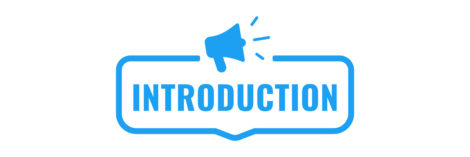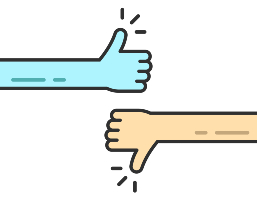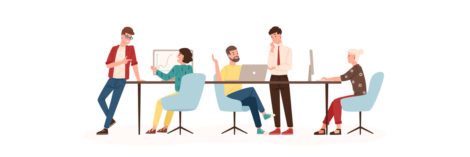It is a fact today that focus groups are probably THE most well-known market research technique. Several types of focus groups exist, which we will present to you in today’s article. This will also be an opportunity to advise the best kind of focus group to use depending on the context.
Summary
credits: Shutterstock
Introduction
First of all, we would like to briefly recall that the focus group is a qualitative methodological approach developed after the World War II. It was conceived as a confirmatory technique. It should therefore make it possible, through group discussion, to confirm or refute pre-existing hypotheses.
We must therefore be careful not to confuse qualitative interviews and focus groups in their use. In this article, we have compiled the advantages and disadvantages of each method.
This being said, let’s get to the heart of the matter: focus groups themselves. There are many different types of focus groups that are adapted to other contexts. We present them to you below.
credits: Shutterstock
The different types of focus groups
Two-way focus groups
This method consists of conducting two focus groups simultaneously, each with its moderator. The first group explores a given topic, while the second group observes the first group and comments on the interactions. This type of focus group aims to gather more in-depth feedback and compare different points of view. It also allows the observing group to draw their conclusions about the aspects mentioned by the first group.
Example of use: the bilateral focus group is particularly interesting for comparing points of view and gathering in-depth feedback. You can use this method in B2B focus groups to gather in-depth expert and professional opinions.
Dual-moderator focus groups
In this particular context, the focus group is managed by two moderators. As a general rule, the first moderator ensures that the session runs smoothly and that all respondents present participate. The second moderator focuses on making sure that the discussion has covered all the topics to be discussed. The division of tasks can also be done as follows: the first moderator asks the questions; the second ensures that the questions have been answered. This type of focus group’s main interest is to make sure that the subjects to be discussed have been covered. Indeed, depending on the technical nature and number of topics to be addressed, the number of participants, and the session’s duration, a single moderator may encounter difficulties. Therefore, the presence of two moderators ensures that the focus group proceeds as planned, that all the topics have been discussed, and that all the participants have interacted during the session.
Example: use this technique particularly when you have little room for maneuver for your focus groups (time, number of focus groups) or to ensure that all the issues are discussed. Use this approach when the topics are mainly technical and specific.
credits: Shutterstock
Dueling-moderator focus groups
In this context, the moderators voluntarily take opposing positions and opinions on the subject at hand. This way, participants will be able to bounce around and interact with each other, taking into account different points of view. The objective here is to confront opinions and challenge participants’ ways of thinking to draw more detailed conclusions.
Example: you can use this method when you need to compare two ideas or two business models, for example. This will allow you to understand which option is the most adapted to the context in which you evolve.
Respondent-moderator focus groups
Here, the objective is to have one of the focus group respondents participate as a moderator for a given period. Several respondents can take turns being the moderator, or one can be designated. This technique aims to create a new group dynamic and encourage respondents to vary their interactions and responses. This type of focus group reduces the unintentional bias that can result from a single moderator. The permutation of roles (for the respondent-moderator) and interlocutors (for the group) encourages the expression of different aspects and perspectives.
Focus groups with clients
In this context, one or more clients participate in the focus group, either openly or covertly. On the one hand, this allows to observe the interactions of the customers with the rest of the group and on the subjects covered, but also to stimulate the other respondents by including a person with knowledge of the product in the group.
Mini focus groups
Here, the group comprises 4 to 5 participants, whereas traditional focus groups include 6 to 12 participants. This allows for a more private, “intimate” atmosphere, where respondents are more likely to open up. This type of focus group is particularly well suited to exploring and discussing sensitive subjects.
Example : this method is best used if you bring up sensitive and personal issues during the focus group (sexuality, violence, and so on).
credits: Shutterstock
Creativity focus groups
The objective of this type of focus group is to elaborate on an idea to create. Here, several kinds of respondents are brought in to contribute to the same subject or project to have experts in different themes. A moderator is present to ensure the smooth running of the brainstorming session, creation, etc. This method is associated with design thinking which is very well adapted to creating new products and services. You will find here 3 pieces of advice to make your design thinking sessions successful.
Example: This method is ideal for generating an idea for a product or service or refining the one you have.
credits: Shutterstock
Remote focus groups
We have already mentioned this technique and the different methods to know in this article.
- Teleconference focus groups are conducted by telephone and can reduce unintended biases, such as those related to the social affiliation. They also ensure the participants’ anonymity, which can be particularly valuable if the subject of the discussion involves sensitive topics.
- Videoconference focus groups are conducted via tools such as Team, Skype, or Zoom. This remote option is the closest to the traditional focus group.
Focus groups are particularly interesting for reducing time and distance barriers: it is sometimes difficult to gather 6 to 12 people in the same room at a given time. Besides, remote focus groups make it possible to recruit participants who may be difficult to access because of their profiles. However, there are also many limitations since remote focus groups lead to a loss of group dynamics. Interactions are more divided and regulated to ensure that everyone understands each other. They are affected by the quality of the network (telephone or internet), etc. We discuss the impact of covid-19 on qualitative market research methods in more detail in this article.
credits: Shutterstock
Conclusion
There are different types of focus groups that you can use depending on the themes you wish to analyze. To increase the chances of success of your focus group(s) and get the most out of it, it is essential to select the participants and define the subjects to be discussed with precision. Also, adapt the focus group format to your topic, its complexity, sensitivity, and respondents’ degree of knowledge and expertise on the subject.
Posted in Marketing, Research.






5 July 2022
Very useful article.